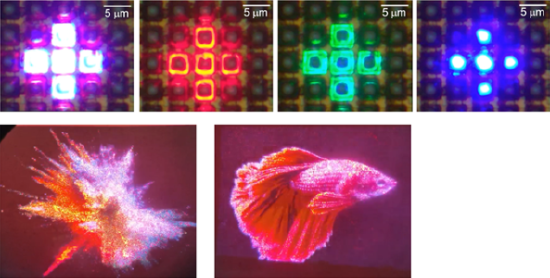Home >Technology peripherals >It Industry >'JBD releases new 'Phoenix series' single-chip full-color MicroLED prototype microdisplay to provide support for the development of VR headsets'
'JBD releases new 'Phoenix series' single-chip full-color MicroLED prototype microdisplay to provide support for the development of VR headsets'
- 王林forward
- 2023-09-06 19:57:171317browse
JBD today announced the launch of the much-anticipated monolithic RGB MicroLED microdisplay Phoenix series prototype. The microdisplay has a field of view of 50°, which is wider than the previous Hummingbird series.
Officially stated that Phoenix’s current engineering sample uses a 0.22-inch panel with 2K resolution and 5.2um sub-pixel pitch. Each 2X2 sub-pixel array is combined into a 5um pitch white pixel. The engineering sample has four independent current drive channels at the same time, three of which are connected to the AlInGaN blue emitter, the AlInGaN green emitter and the AlInGaP red emitter respectively.
The official emphasized the "vertical stacking and coaxial arrangement of these semiconductor emitters" and provided cross-sectional SEM images for demonstration, in which (a) is a full-color wafer; (b) is tilted at 45 degrees SEM image showing 5um color pixel pitch array; (c) is focused ion beam cut and cross-sectional SEM image of multi-level interconnect technology, electrical connection schedule not shown

Officially claimed that this unique emitter arrangement allows for high WPE and high light concentration in the vertical direction. In future production phases, JBD plans to make 0.3-inch panels as standard products with 4K resolution and 2um sub-pixel pitch, which is equivalent to 2K resolution and 4um white pixel pitch.
After inquiry, we found that the most commonly used method currently is to use quantum dots (QD) for color conversion to achieve monolithic RGB display. However, this down-conversion approach has limitations in achieving maximum brightness and device lifetime. Because as the pump flux density and MicroLED junction temperature increase, the lifetime of QD will be significantly reducedAccording to JBD, three-color integration technology based on epitaxy, such as multi-color epitaxial layer, selective area epitaxy, Regeneration, nanostructures and 3D structures have yet to produce better prototypes with pixel pitches less than 10um. Existing full-color MicroLED displays on the market are achieved by combining three separate red, green and blue panels with X-cube prisms. Single-panel monolithic RGB microdisplays are often the industry's first choice, which can achieve a larger field of view and a smaller light engine profile. JBD claimed that its Phoenix demonstrated a single sub-5um pitch using native semiconductors. Feasibility of on-chip RGB MicroLED microdisplays. Compared with existing single-panel Micro-OLED displays, the brightness is improved by more than 2 orders of magnitude. In addition, higher waveguide collimation efficiency can be achieved due to simplified system-level integration onto AR glasses that reduces optical losses ▲Fig. Source JBD
▲Fig. Source JBD The above is the detailed content of 'JBD releases new 'Phoenix series' single-chip full-color MicroLED prototype microdisplay to provide support for the development of VR headsets'. For more information, please follow other related articles on the PHP Chinese website!

